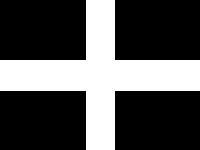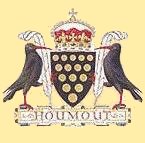

The Duchy of Cornwall
An Duketh A Kernow
Restormel Estate Office
Lostwithiel, PL22 0HN
Tel: (01579) 343149
Email: western@duchyofcornwall.org
Web: www.duchyofcornwall.org
Web: www.duchy.ac.uk
 |
 |
The Duchy of CornwallAn Duketh A KernowRestormel Estate Office |
William the Conqueror allocated Cornwall to one of his relatives, and by 1337 Edward III created the Duchy as an estate for the eldest sons of the monarch. This has remained the case down the ages, through 24 Dukes of Cornwall, to Prince Charles today.
In 1337 the Earldom of Cornwall was raised to a Dukedom and the first Duke was the Edward the Black Prince. The the Great Hall of Lostwithiel, later known as the Duchy Palace, then became the administration centre for the Duchy and the only polling station for the whole of Cornwall.
Edward the Black Prince rode into Launceston Castle in 1337 to be proclaimed the first Duke of Cornwall. This was the first Duchy to be created in England. Apart from owning large estates the Dukes of Cornwall claimed taxes from tin and other mineral rights. The taxes on tin mining continued until 1838, although after this date they still received income from mineral rights. This was also known as Cornish Stannary (Tin) Law.
In 1760 the Crown gave up its estates to the nation in exchange for an income, but the Duchy of Cornwall estates were not included in this deal. The power of the Duchy politically can be seen in the fact that Cornwall returned 44 MP's to parliament until 1832 - the same number as the whole of Scotland. Today Cornwall is represented by only five MP's in a much larger House of Commons.
Nothing appears to have been written about the life or works of the 24 Dukes of Cornwall over the years, apart from the fact that they drew considerable wealth from the estates.
Who says that the monarchy does not move with the times!
On the 9th April 2005 Prince Charles married Camilla Parker Bowles and upon their marriage she became Duchess of Cornwall.
In 1864 a dispute arose over silver and gold coins, from the reigns of Queen Elizabeth, King James and King Charles I, which were found in Luxulyan parish churchyard. The Duchy had asserted its right to them as treasure trove, but the Solicitor to the Treasury questioned this, asking for copy documents under which "the claim of the Duchy was founded". The Duchy sent copies of the Charters of its creation and correspondence stating that, as the Coroner is the officer responsible for treasure trove, and the Duke has the right of appointing the Coroner within Cornwall, the treasure trove belonged to the Duchy. It also argued that the 3rd Duchy Charter "expressly prohibits any such Minister of the Crown acting within Cornwall". In response the Government Attorney and Solicitor General advised that the Treasury back down as could not hold an Inquest of Treasure within the The Duchy and that they could not execute any writs because of the exclusion of all Ministers of the Crown from entering any lands of the Duchy. The High Sheriff of Cornwall is appointed by the Duke, not the monarch, in contrast to the other counties of England and Wales. The Duke has the right to the estates of all those who die without named heirs (bona vacantia) in the whole of Cornwall. In 2013, the Duchy had a revenue surplus of £19 million, a sum that was exempt from income tax, though the Prince of Wales chose to pay the tax voluntarily.
The Duchy of Cornwall refers to the land owned by the Duke of Cornwall, and not to the County of Cornwall. The Duchy owns 128,000 acres, mostly in the south of England (and not necessarily all in Cornwall, in fact over half the estate is on Dartmoor in Devon), which is run on a commercial basis - tenanted out to some 200 farms, plus 2400 acres of woodland, a few castles and mineral rights over the whole county.
Shellfish farming is the main commercial activity in the Duchy's estuaries. The most important is the historic Duchy Oyster Farm on the Helford River.
The Isles of Scilly have been part of the Duchy of Cornwall since its foundation in the 14th Century. The Duchy owns the freehold of most of the land and nearly a third of the residential buildings on the Islands.
The Duchy is above all else a landed estate and will continue to be so. Its relationship with the people who work on the land is of paramount importance and it is the farmer who is the backbone of the whole operation.
The Duchy Home Farm at Stoke Climsland near Callington is an organic farm operated by the Duchy of Cornwall. The farm is part of the gardens of Highgrove House, the country home of Charles, Prince of Wales. The produce is used as ingredients in Duchy Originals products, sold in vegetable boxes, and wholesaled to supermarkets and restaurants. Prince Charles is credited with using "pioneering agriculture techniques" to produce this organic food. Prince Charles converted the 900 acres Home Farm estate to organic farming in 1986. He was initially criticised for some of his methods with many British farmers disliking his choice to avoid modern techniques. Since that time a significant number of farms have subsequently switched to organic agriculture, and visit Duchy Home Farm to review methods there.
Duchy College Rosewarne is situated just outside Camborne on a working farm. The extensive beautiful grounds are spread over approximately 115 acres and are an excellent horticultural resource with national plant collections on campus. On-site they also have a working nursery where they grow and sell their own plants, a working farm and protected cropping unit, land-based engineering workshops and specialist veterinary nursing facilities, the only one of its kind in the county.
Cornish Orchards near Duloe are also part of the estate.
The Duchy also has a Garden Centre and Nursery that incorporates a well known cafe at Lostwithiel.
Cadoc was a survivor of the Cornish royal line at the time of the Norman Conquest of England in 1066 and was appointed as the first Earl of Cornwall by William the Conqueror. According to the vernacular history of the Cornish and the Bodmin Manumissions the descendants of Cadoc lived on in the ancient areas of Pydar and Bodmin in Cornwall and included as a descendant Thomas Flamank, the Bodmin lawyer, who together with Michael An Gof led the uprising that marched against the English all the way to London in 1497. Cadoc was himself a descendant of King Doniert (King Donyarth) whose ancient inscribed stone is still to be found in south-east Cornwall.
Brian of Brittany (ca. 1040-1084 or 85), resigned ca. 1072.
Robert, Count of Mortain (ca. 1038–1095).
William, Count of Mortain (1084–1140), peerage forfeit 1106.
Alain de Bretagne, 1st Earl of Cornwall (ca. 1100-1146), deprived 1141.
Reginald de Dunstanville, 1st Earl of Cornwall (1110-1175).
Baldwin de Redvers, (ca. 1160-1188).
John de Dunstanville, Earl of Cornwall (1167–1216).
Henry FitzCount, Earl of Cornwall (ca. 1175–1222), resigned peerage 1220.
Richard, 1st Earl of Cornwall, King of the Romans (1209–1272).
Edmund, 2nd Earl of Cornwall (1249–1300).
Piers Gaveston, 1st Earl of Cornwall (1284–1312).
John of Eltham, Earl of Cornwall (1316–1336).
1337 - Earldom of Cornwall was raised to a Dukedom.
Edward of Woodstock, the Black Prince, (1337-1376) - the first Duke of Cornwall.
Richard of Bordeaux (1376-1399) after the death of his father, the Black Prince, then King Richard II.
Henry of Monmouth, (1399-1413), assumed title when his father, Henry IV, became king, later King Henry V.
Henry, (1422-1453), then as King Henry VI.
Edward of Westminster, son of Henry VI, (1453-1471).
Edward of Middleham, son of Edward IV, (1470-1483), then as King Edward V. One of 'the princes murdered in the Tower'.
Arthur, (1486-1502), eldest son of Henry VII.
Henry, younger son of Henry VII (1502-1509), then as King Henry VIII.
Edward Tudor, (1537-1547), then as Edward VI.
Henry Frederick, eldest son of James I, (1603-1612).
Charles, younger son of James I, (1613-1625), them as King Charles I.
Charles, son of Charles I, (1630-1649), then as King Charles II.
James Frances Edward, the Old Pretender, (1688-1689).
George Augustus, son of George I, (1714-1727). then as George II.
Frederick Lewis, son of George II, (1727-1751).
George Augustus Frederick, son of George III, (1762-1820), then as King George IV.
Albert Edward, eldest son of Queen Victoria, (1841-1901), then as King Edward VII.
George Frederick Ernest Albert, second son of Albert Edward, (1901-1910), then as King George V.
Edward Albert Christian George Andrew Patrick David, son of George V, (1910-1936), then as King Edward VIII and later the Duke of Windsor.
Charles Philip Arthur George, eldest son of Queen Elizabeth II, (1952-2022).
William Arthur Philip Louis, son of Charles, (2022-).
Joan, 4th Countess of Kent, (1328-1325).
Lady Anne Neville, (1456-1485).
Infanta Catherine of Aragon, (1485-1536).
Princess Caroline of Brandenburg-Ansbach, (1683-1737).
Princess Augusta of Saxe-Gotha-Altenburg, (1719-1772).
Duchess Caroline of Brunswick-Wolfenbüttel, (1768-1821).
Princess Alexandra of Denmark, (1844-1925).
Princess Mary of Teck, (1867-1953).
Lady Diana Spencer, (1961-1997).
Camilla Parker Bowles, (1947-2022).
Catherine Elizabeth Middleton, (2022-).
Cornish Stannary (Tin) Law Cornwall's History Farming in Cornwall Famous Cornish People
Duchy Palace Cornwall Heritage Trust Duchy of Cornwall Nursery